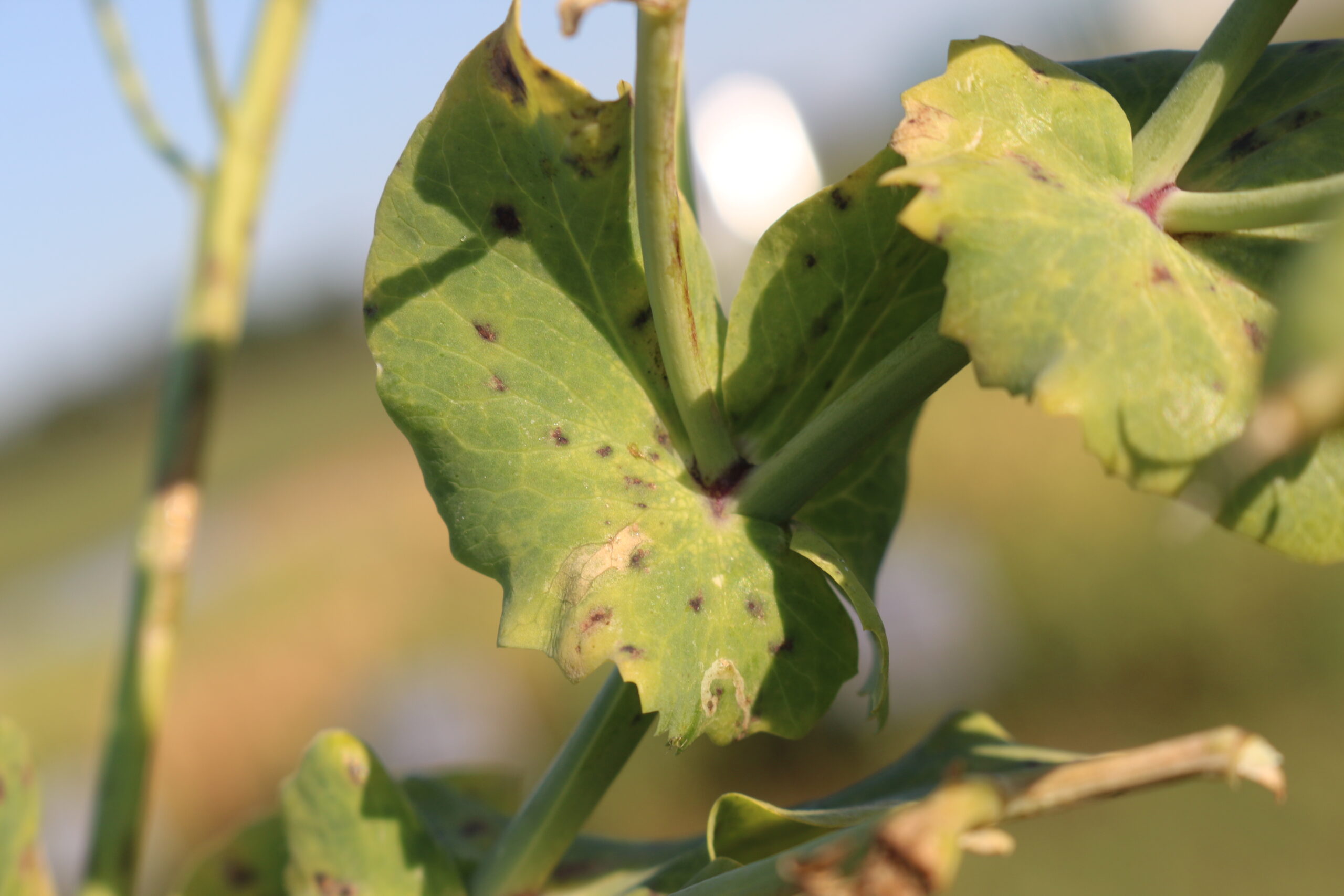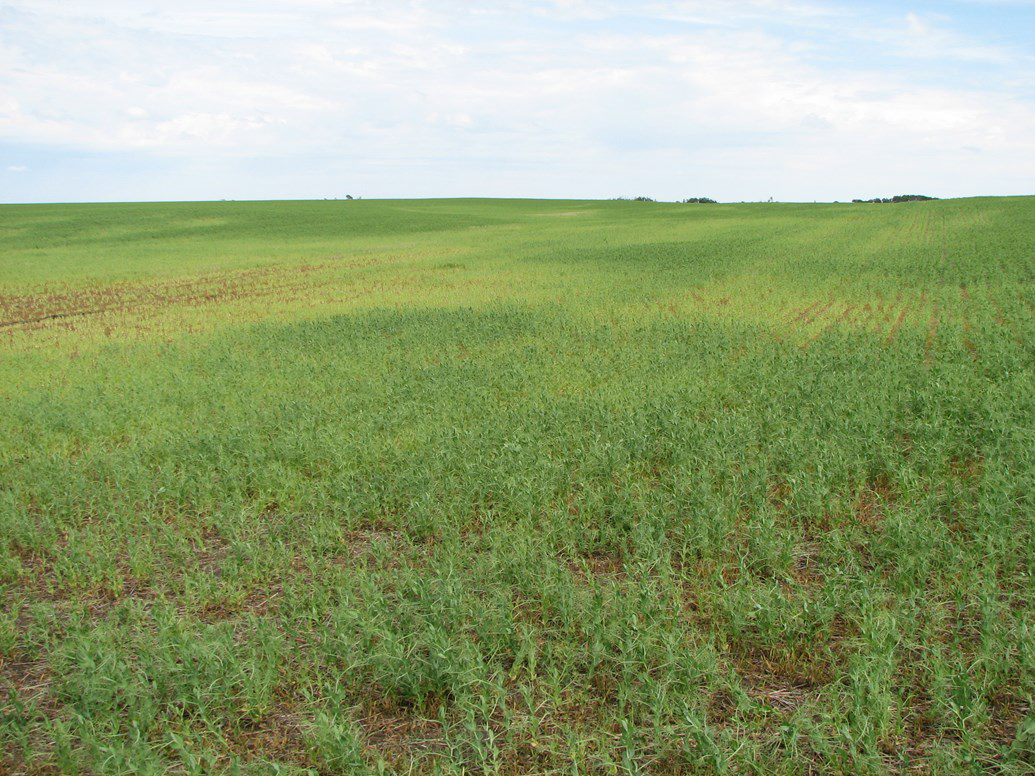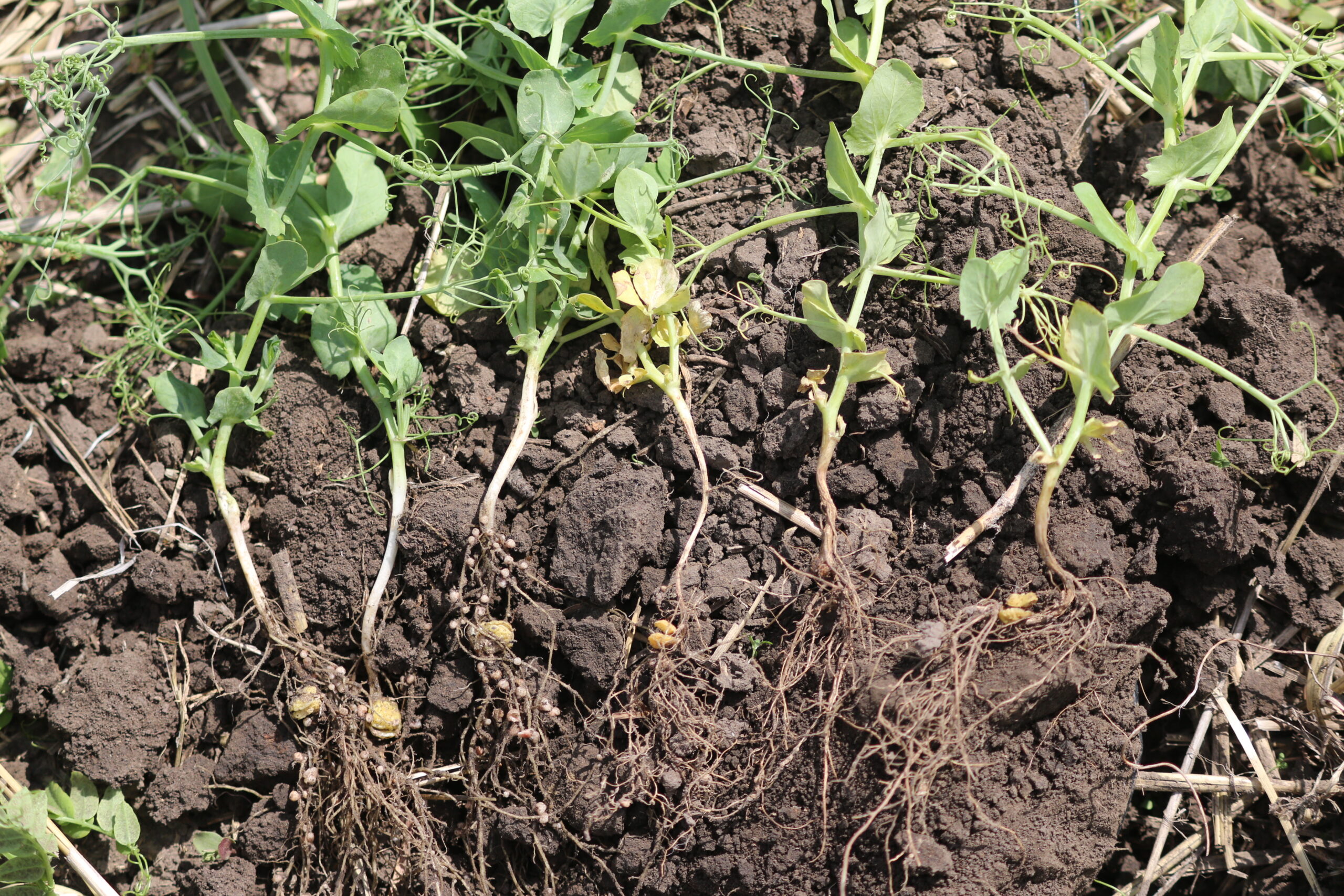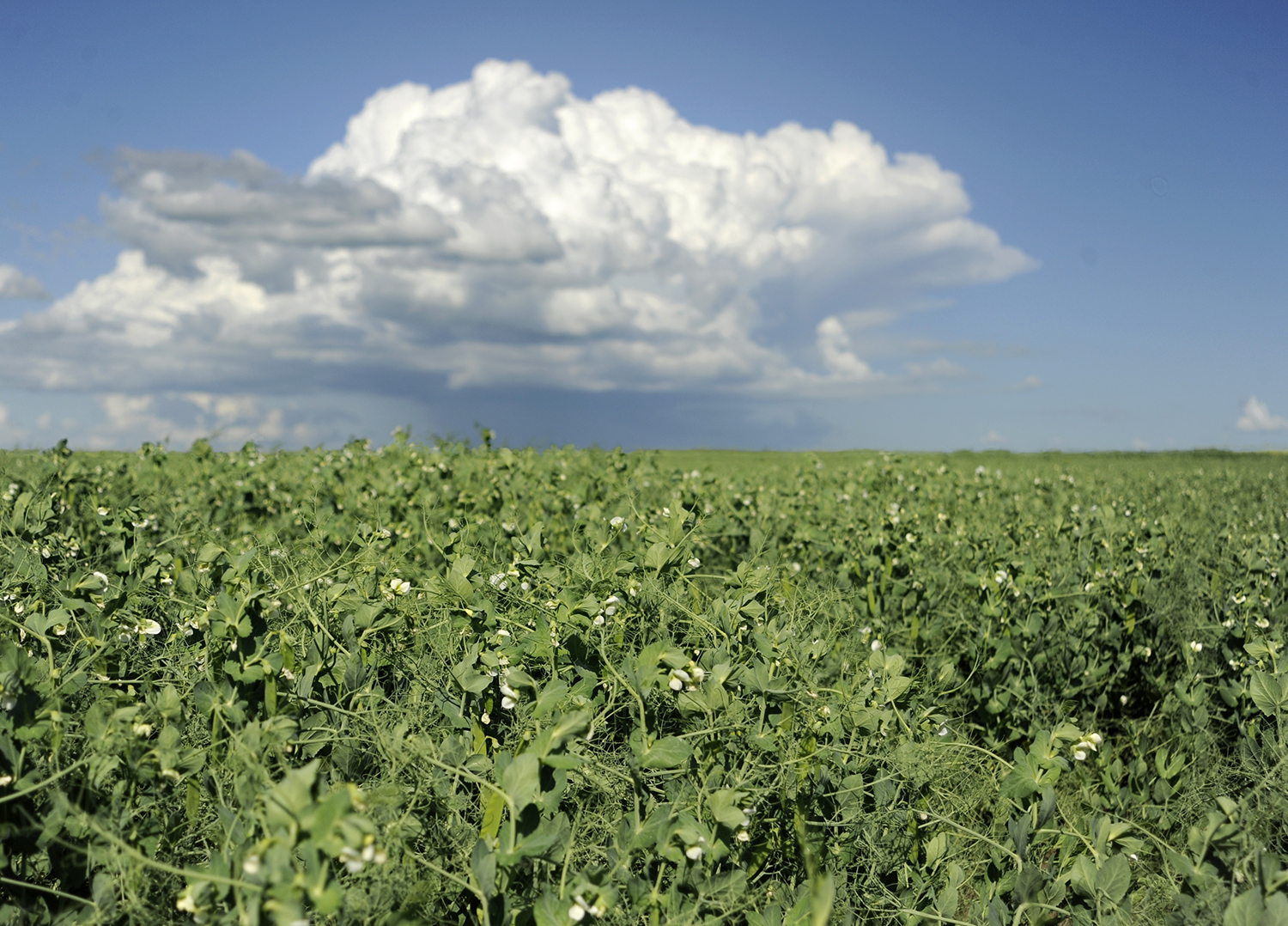By Donna Fleury, P. Ag
In peas, ascochyta blight is the most common and economically significant disease. Generally referred to as the ascochyta disease complex, this disease is caused by three fungi that cause leaf, stem and root rot symptoms on peas. In Saskatchewan, Ascochyta pinodes is the most common fungal species, with infection caused by Mycosphaerella pinodes, the sexual stage of this fungus that produces air-borne spores on peas. Ascochyta blight is crop specific, meaning that the Ascochyta complex in peas will only infect peas and not chickpeas, lentils, or other pulse crops.
Plant breeder Tom Warkentin at the Crop Development Centre outlines management strategies for the ascochyta complex in peas. Ascochyta is widely present in peas in Western Canada and all varieties are moderately susceptible. As with other diseases, consider the disease triangle when making decisions: susceptible host crop (pea), virulent pathogen on host (ascochyta), and the environmental conditions during the growing season. The impact on yield depends on the timing of the initial infection and on weather conditions.
Most ascochyta symptoms observed in the field will be those of mycosphaerella blight, and early symptoms first appear as small purplish black to brown spots or lesions on lower stems, leaves, and pods. Severe infections may lead to girdling of the stem near the soil line, which is known as foot rot. Girdling weakens the stem and often results in premature lodging. The impact on yield depends on the timing of initial infection and on weather conditions.
Begin scouting early during the vegetative stage and continue to scout through flowering. Observe whether the disease symptoms are moving upwards in the plant canopy. If symptoms move upward in the plant canopy, beyond the lower third of the plant, fungicide application may be warranted. If symptoms do not move beyond the lower third of the plant canopy by the mid-flowering stage, large yield losses would not be expected. A well-established robust tall stand will favor more humidity in the canopy, and wet conditions leading up to flowering through to pod set are favorable for disease development. Drier conditions will mean less ascochyta and impacts on yield will be lower.
The timing of infection, yield potential of the crop, weather conditions, and value of the harvested seed will all influence the economics of fungicide application. Tighter crop rotations are more likely to have higher disease pressure for the ascochyta complex. If warranted, a fungicide treatment should be made at early- to mid- flowering stage for maximum effectiveness. Under high disease levels or very high yield potential, two fungicide applications may be warranted, with the second application about 10 to 14 days after the first one. To reduce the risk of resistance, rotate fungicide products and mode of action.
Warkentin and other plant breeders are continuing to work on improving resistance in pea varieties, however for now selecting varieties listed in the Varieties of Grain Crops 2016 with a better mycosphaerella score and a lower lodging score is a good start. Warkentin notes that on the scale from one to nine for mycosphaerella blight (one=no disease, nine=completely blighted), there is only a small difference between varieties scores of four to 5.5. However, there is a bit larger variation in lodging resistance, with varieties scoring from 3.5 to 8.5 on a one to nine scale (one=completely upright, nine=completely lodged). Varieties that are better at staying upright tend to have less disease and will allow for drying of the canopy after a rain event.
Ascochyta disease resistance is a complex challenge for pea breeders, with more than 10 genes for resistance, each contributing a small amount, so therefore various strategies are being implemented to improve resistance in varieties.
To help make decisions on whether fungicide application is warranted or for disease symptomology please refer to Fungicide Decision Support Checklist for Ascochyta in Pea.



